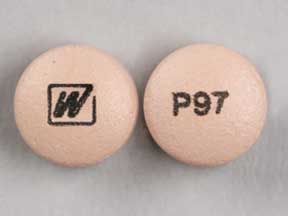Primaquine Disease Interactions
There are 2 disease interactions with primaquine.
Primaquine (applies to primaquine) G-6-PD/NAPD methemoglobin deficiency
Major Potential Hazard, Moderate plausibility. Applicable conditions: G-6-PD Deficiency, Methemoglobinemia
Hemolysis, hemolytic anemia, and methemoglobinemia have been reported during use of primaquine in patients with glucose-6-phosphate dehydrogenase (G-6-PD) deficiency or nicotinamide adenine dinucleotide (NADH)-methemoglobin reductase deficiency. Therapy with primaquine should be administered cautiously in these patients. Since large doses of primaquine may increase the risk of hemolytic reactions, the recommended dosage (15 mg base daily for 14 days in adults) should not be exceeded. Close monitoring is recommended if primaquine is prescribed to patients who have shown a previous idiosyncrasy to primaquine or that have family or personal history of favism. Blood cell counts and hemoglobin determinations should be performed regularly. Primaquine therapy should be discontinued immediately if signs suggestive of hemolytic anemia occur, such as marked darkening of the urine or sudden decrease in hemoglobin concentration or erythrocytic count.
Primaquine (applies to primaquine) granulocytopenia
Major Potential Hazard, High plausibility. Applicable conditions: Rheumatoid Arthritis, Lupus Erythematosus, Neutropenia, Anemia
The use of primaquine is contraindicated in acutely ill patients suffering from systemic disease manifested by tendency to granulocytopenia, such as rheumatoid arthritis and lupus erythematosus. Primaquine has been reported to cause hematologic toxicity such as bone marrow depression, anemia, and leukopenia. Therapy with primaquine should be administered cautiously in patients with preexisting bone marrow depression or leukopenia. Since large doses of primaquine may increase the risk of leukopenia, the recommended dosage (15 mg base daily for 14 days in adults) should not be exceeded. Close monitoring is recommended if primaquine is prescribed to patients who have shown a previous idiosyncrasy to primaquine as manifested by leukopenia, hemolytic anemia, or methemoglobinemia. Blood cell counts should be performed regularly. Primaquine therapy should be discontinued immediately if there is a sudden decrease in leukocyte count.
Switch to professional interaction data
Primaquine drug interactions
There are 337 drug interactions with primaquine.
More about primaquine
- primaquine consumer information
- Check interactions
- Compare alternatives
- Pricing & coupons
- Drug images
- Side effects
- Dosage information
- During pregnancy
- Drug class: antimalarial quinolines
- Breastfeeding
- En español
Related treatment guides
Drug Interaction Classification
| Highly clinically significant. Avoid combinations; the risk of the interaction outweighs the benefit. | |
| Moderately clinically significant. Usually avoid combinations; use it only under special circumstances. | |
| Minimally clinically significant. Minimize risk; assess risk and consider an alternative drug, take steps to circumvent the interaction risk and/or institute a monitoring plan. | |
| No interaction information available. |
See also:
Further information
Always consult your healthcare provider to ensure the information displayed on this page applies to your personal circumstances.


